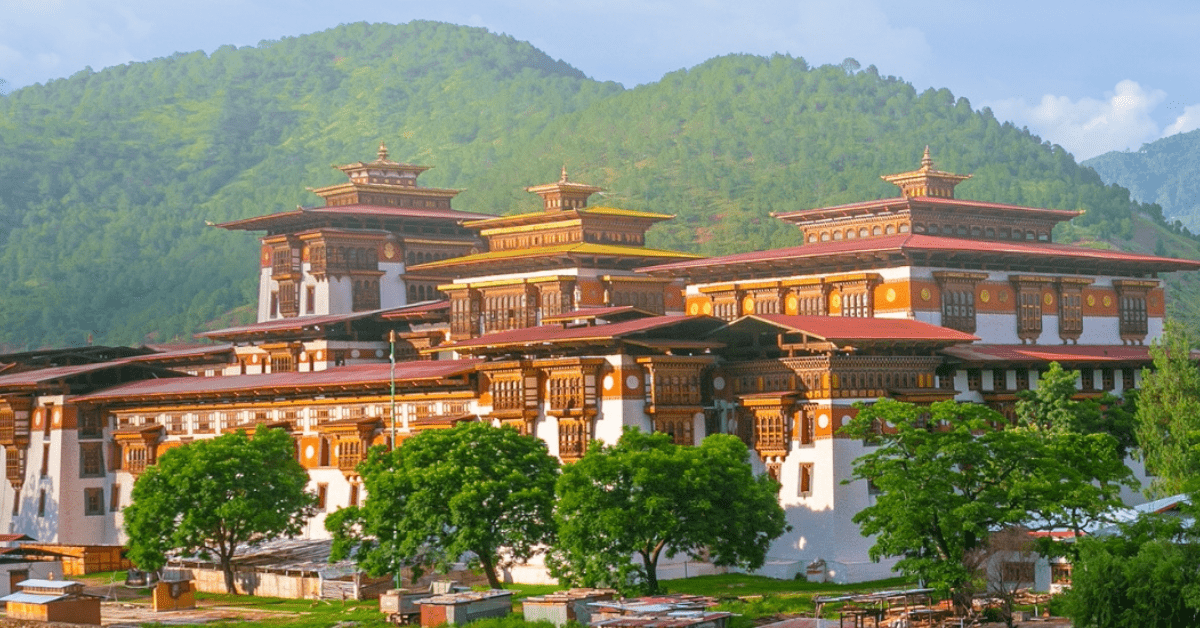
European Travel
- Asia
- Comment (0)
Best Time to Visit Bhutan: Seasonal Highlights
Bhutan—known as the Land of the Thunder Dragon- one of the best countries to visit in Asia for travelers, and it’s famous for its impressive atmosphere, numerous monastic sites, and interesting culture. You will find spiritual peace, beautiful places to visit in Bhutan, and cultural events all year long. You can explore fascinating sites in Bhutan, like Paro Taktsang or Punakha Dzong, as well as discover local customs, and you’ll soon find something in this country for any traveler. Here, we’ll be listing the best time to visit Bhutan, divided by season.
Spring in Bhutan (March to May)
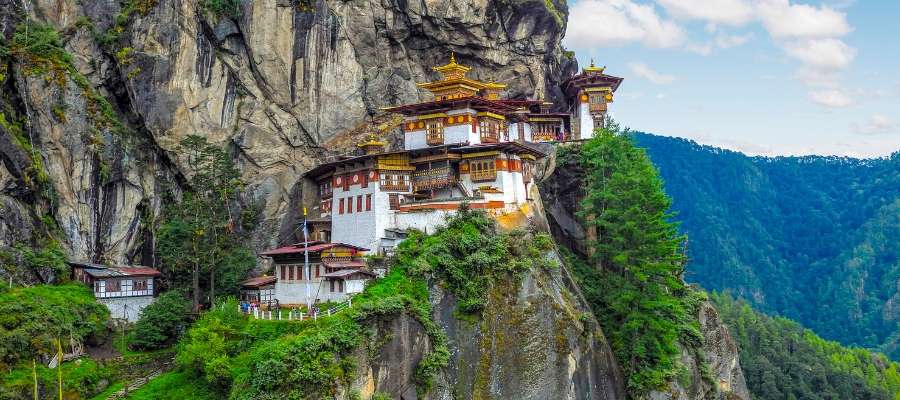
Temperature: 10°C to 25°C
Thanks to its nice weather, clear atmosphere and colorful blooms, spring makes best time to visit Bhutan. Rhododendrons and wildflowers color the hills during this season to make the valleys very lively. People who enjoy nature, photography and outdoor trips should visit Bhutan in the spring. You have a wonderful view from any spot, thanks to the clear skyline of the snow-covered Himalayas. At the same time, lots of people like to travel then, so it’s best to arrange your flights to Bhutan and accommodations well ahead of time.
Best Places to Visit:
- Paro Taktsang (Tiger’s Nest Monastery): Hiking up to Paro Taktsang, the famous Tiger’s Nest Monastery, will give you views of the colorful nature and clear skies.
- Punakha Valley: This part of Bhutan will enchant you with Punakha Dzong and its stunning rice fields turning green.
- Bumthang Valley: spring makes the area’s monasteries and forests even more beautiful.
- Dochula Pass: At Dochula Pass, enjoy scenic mountain views and the best of rhododendron flowers.
- Thimphu: Tourists flock to Thimphu during spring for markets, temperature and enjoyment of Bhutan’s culture.
Festivals and Events:
- Paro Tshechu (March/April): Paro Tshechu in March or April is well-known for its dances, rituals and local celebrations.
- Domkhar Tshechu: In Bumthang, the Domkhar Tshechu festival gives visitors a close look at Bhutanese culture and traditions.
- Rhododendron Festival (April): Held in Lamperi Botanical Garden, displays of over 40 types of rhododendrons along with entertainment, delicious food and crafts.
Summer in Bhutan (June to August)
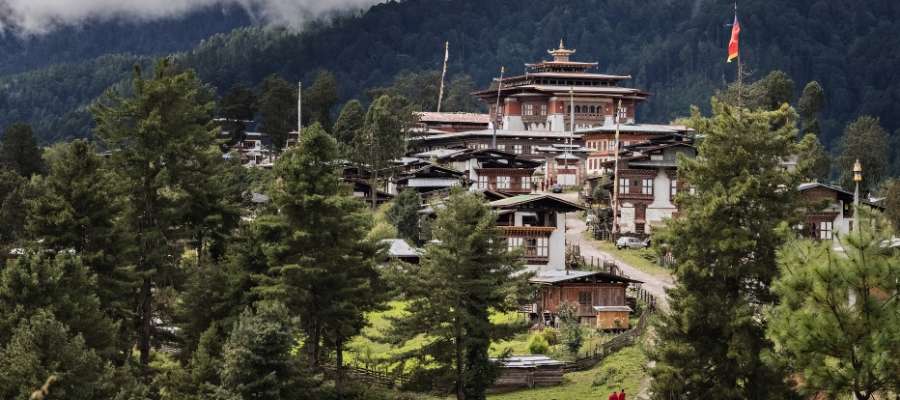
Temperature: 15°C to 27°C
Summer is also the monsoon season in Bhutan. As the country experiences much rain in its south and center, these places become richly green and beautiful. Rain keeps the forests and rice paddies alive which makes the scenery truly stand out. Because the trails are very muddy, this time of year suits people who enjoy a slower pace and are watching their budget. There is less crowd at monasteries and cultural sites because fewer tourists visit.
Best Places to Visit:
- Trongsa and Bumthang Valleys: Trongsa and Bumthang do not receive much rain and can still be visited by travelers.
- Punakha: Encircled by beautiful hills, Punakha Dzong stands out more during the monsoon because of the mist it surrounds.
- Gangtey Valley: The attraction here is the lovely wetlands, calmness and the chance to spot birds.
- Phobjikha Valley: Phobjikha Valley is quieter at this time and allows tourists to enjoy serene walks through beautiful views.
- Thimphu and Paro: light rain doesn’t hold you back, so you can enjoy museums and cultural activities.
Festivals and Events:
- Kurjey Tshechu (June/July): In Bumthang, Kurjey Tshechu (June/July) takes place to pay tribute to Guru Rinpoche through its colorful dances.
- Haa Summer Festival (July): Each July, Haa Summer Festival focuses on nomadic traditions, food and music in the Haa Valley.
- Matsutake Mushroom Festival (August): The Matsutake Mushroom Festival takes place in Genekha and Ura Valley during August, joining food, rare mushroom treks and colorful cultural activities.
Autumn in Bhutan (September to November)
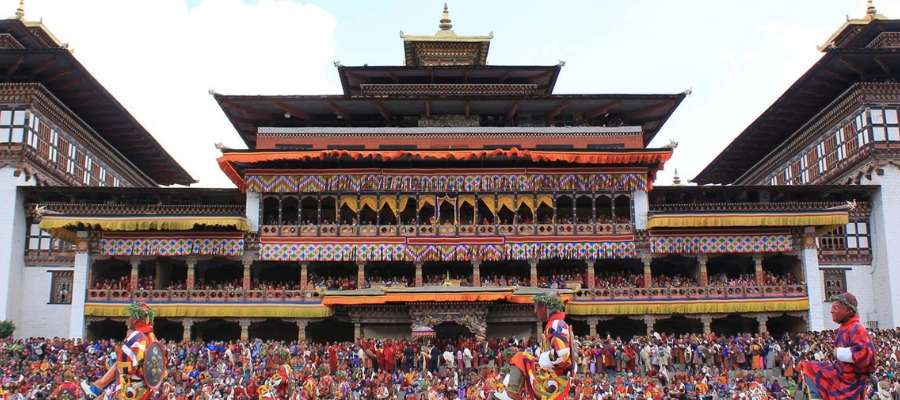
Temperature: 10°C to 23°C
You might find fall to be the best time to visit Bhutan, because it brings clear weather, cooler temperatures and impressive mountain views. Celebrating its post-monsoon spell, the countryside turns softly golden and it’s perfect for adventuring and learning about its culture. The spring is the main time for festivals, so you have a chance to see traditional activities along with beautiful surroundings. Given how loved autumn is, it’s best to reserve your accommodation early.
Best Places to Visit:
- Thimphu: Home to the largest festival in the country and a hub for Bhutanese culture and cuisine.
- Jakar (Bumthang): Jakar (Bumthang) is a must for anyone who wants to experience spiritual and beautiful sights.
- Phobjikha Valley: keep an eye out from mid-November, as the cranes fly in from Tibet.
- Paro and Punakha: Because of their rich history, great autumn weather and clear views, Paro and Punakha are great places to visit in fall.
- Haa Valley: Get to know the traditional way of life in Bhutan as lived by its villagers.
Festivals and Events:
- Thimphu Tshechu (September): Thimphu’s most loved festival, well known for bright dances, solemn blessings and royal participation.
- Wangdue Phodrang Tshechu: Jakar (Bumthang) is a must for anyone who wants to experience spiritual and beautiful sights.
- Jambay Lhakhang Drup (October/November): he sacred fire dance takes place each year in the town’s oldest temple.
- Black-Necked Crane Festival (November): The Phobjikha region honors the arrival of rare cranes by arranging dances and telling legends about them.
Winter in Bhutan (December to February)
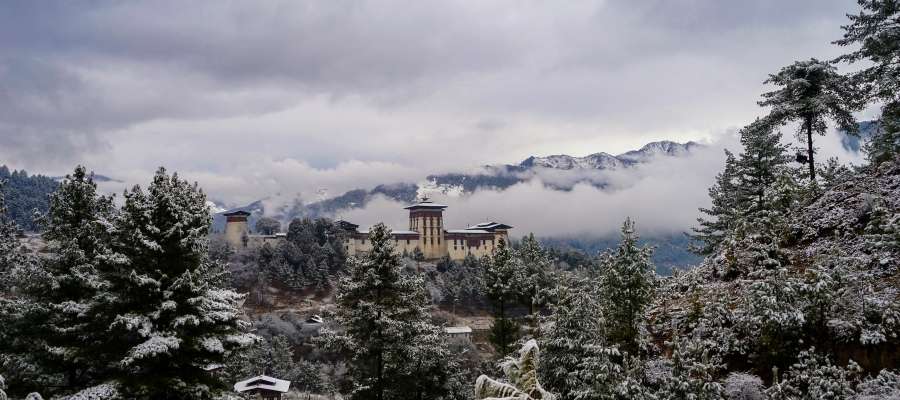
Temperature: -5°C to 15°C
At higher elevations, Bhutan’s winter is quite cold, but it is known for bright, blue days and quiet surroundings. Some mountains are blocked by snow, so if your primary goal is to access them, you’ll have to wait. Yet, if you stick to the open valleys, you’ll find they’re beautiful and devoid of people. If you prefer trip without stress and full of nature, a winter break can be a wonderful experience.
Best Places to Visit:
- Punakha: Punakha is less cold than most other places in Bhutan and never becomes impassable.
- Phuentsholing: which borders India, is suitable for spending the winter in a low-lying place.
- Thimphu and Paro: get chilly, but it feels great since you can spend the days wandering for culture or pictures.
- Phobjikha Valley: Phobjikha Valley offers a chance to watch the black-necked cranes in their winter homes.
- Bumthang: If you can bear the cold, the frosty landscapes and spiritual ambiance are rewarding.
Festivals and Events:
- Punakha Dromche (February):Punakha Dromche is the winter event where locals value their religious protectors, show off in stunning costumes and participate in river rituals.
- Trongsa Tshechu (December): is not widely celebrated, but it is an incredible event for the region.
- Lhosar (February): people often eat traditional food, sing and dance and light up the sky with group rituals in eastern Bhutan.
Conclusion: When Should You Visit Bhutan?
The best time to visit Bhutan, to see colorful spring festivals, clear visions of the Himalayas and enjoy trekking weather are between March and May or after September and until November. If you want to travel on a budget or enjoy peace and privacy whether alone or within a Bhutan travel package, summer and winter have special things to offer, with fewer crowds and interesting events.
Everyone who visits will experience wonder, spiritual traditions and unforgettable beauty whenever they go to Bhutan. Let European Travel experts help you arrange the ideal visit to this amazing place.
Frequently Asked Questions:
1. What is the best time to visit Bhutan for clear views of the Himalayas?
Enjoying the Himalayas at their best is possible during spring, from March to May and autumn, from September to November. Since the days are clear and dry, the seasons are great for anyone who loves photography, sightseeing or hiking.
2. Is traveling to Bhutan during monsoon month a good idea?
If you’d like to find fewer tourists and enjoy beautiful, green views, you can travel to Bhutan during June to August. Mind that there may be rain and trails that get muddy during your visit. Those on a tight budget and looking for cultural experiences will find Bhutan suited to their needs.
3. When should people plan a trekking trip to Bhutan?
Bhutan is best visited for trekking during the spring months, from March to May and in the autumn, from September to November. With reliable weather and clear skies, the trails are well maintained, making it a great time for hiking.
4. Which season is the least crowded for tourists in Bhutan?
The least busy times of year are the summer and winter seasons. This time of year is perfect for travelers looking to enjoy quiet trips, save money and meet the locals in their cultural ways.
5. What are the best things to do in Bhutan during peak season?
During spring and autumn, Bhutan gives tourism two aspects: adventure and cultural exploration! Visit Tiger’s Nest, admire flowery rhododendron treks and get to know the bright and unique Paro Tshechu and Thimphu Tshechu. Visit Punakha, Phobjikha and Bumthang, well-known valleys that are also home to the Black-Necked Cranes. With a bright sky and panoramic views, this is the perfect month to travel to Bhutan.


